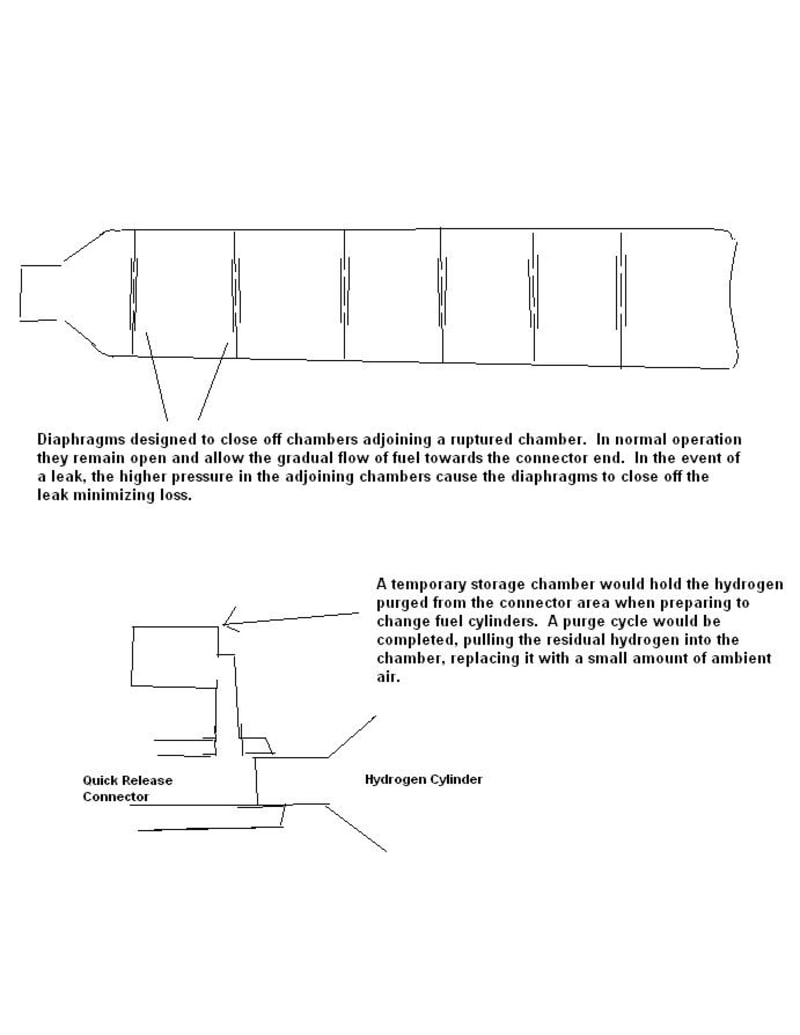Changing the fuel source for motor vehicles requires a comprehensive approach because of the already established infrastructure and supply of petroleum based fuels. In addition to the lack of infrastructure, it is recognized that hydrogen fuel will not be commercially viable unless competing against gasoline of well over $4.00 US per US Gallon. Hydrogen fuel is ideal from a pollution control perspective, but not from a BTU content perspective. This proposal seeks to solve these several problems simultaneously.
1. Hydrogen is less energy-dense, and therefore requires that a greater volume of fuel be carried to give the same range of travel than does conventional gasoline fuels. In order to introduce hydrogen as a motor vehicle fuel source, it is proposed that initially hydrogen fueled fleets of inner city busses and taxis, police and emergency vehicles be deployed. These vehicles do not generally require the range between fuelings that a privately owned vehicle would require. This proposal has the added benefit of helping densely populated areas meet pollution control standards.
2. By starting out with city based and owned vehicles, the fueling infrastructure needed would be localized to the area where the fuel is needed. I.E. the city’s motor pool could operate the fueling station needed for its own vehicles.
3. It is further proposed that sea-based floating platforms be deployed supporting wind turbines of either conventional prop design or uni-directional helical types. The electricity produced by wind powered generators would be used to produce hydrogen via electrolysis of sea water and also supply the electrical needs of the platform itself.
4. The hydrogen fuel thus produced would be compressed into reusable pressure bottles, similar to acetylene cylinders, but with safety chambers as noted below. These hydrogen bottles would have quick release mechanisms in order to facilitate the refueling needs of motor vehicles. The hydrogen cylinders could be transported t o land by barge. In this way, the platform could be moved to alternate locations as needed. The hydrogen could be piped to land, but this means the platform would need t o be in one location permanently.
5. These hydrogen-fueled vehicles could initially use IC engines in order to simplify the fuel’s introduction, and improve the power to weight ratio. The vehicles would be designed to share a common quick-release fuel connector and port so that a common fuel cylinder could be used across vehicle platforms.
6. The fuel cylinder would be designed with several safety chambers so that hydrogen fuel leakage would be minimized in case of puncture from an accident.
7. The fuel cylinder connector collar would be designed to capture the hydrogen that might escape when changing cylinders. This could be done with a purge cycle that pulls the hydrogen from the connector neck and stores it in a small adjoining chamber.
By introducing hydrogen fueled motor vehicles in this way, and infrastructure could be gradually introduced as a first step towards a partially hydrogen fueled transportation system.
Like this entry?
-
About the Entrant
- Name:Stephen Brown
- Type of entry:individual
- Software used for this entry:MS Paint
- Patent status:none








